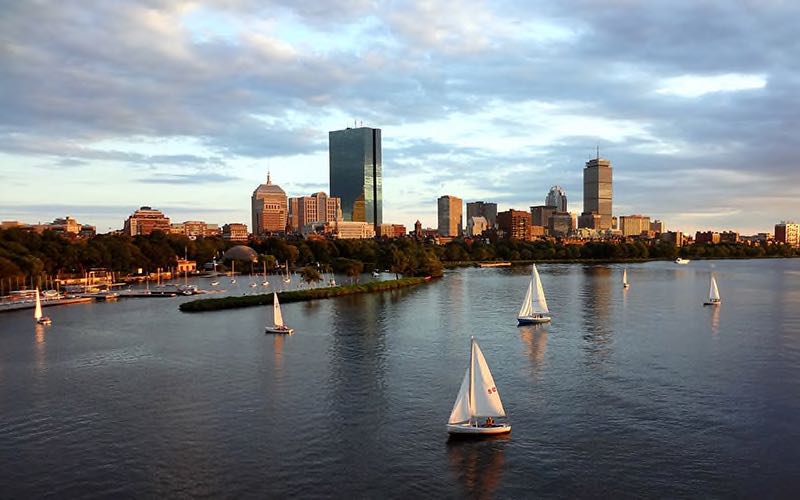
The Charles River in Boston. Photo: Leatherndevil via CC3.0
August 13, 2020 (BOSTON, MA) – As a result of a petition filed last year by Conservation Law Foundation (CLF) and Charles River Watershed Association (CRWA), large properties polluting the Charles River with stormwater runoff may be forced to obtain Clean Water Act permits for the first time. Permitting will be discussed at EPA-hosted webinars this September and the goal of the process will be a healthier river that is not plagued by toxic algae blooms.
“Polluted stormwater is poisoning the Charles River, leading to blooms of dangerous algae,” said Heather Govern, Director of CLF’s Clean Air and Water program. “The blooms can sicken humans and pets which means boat and swim races are increasingly cancelled in the summer months and people are unable to use this precious resource. Large properties surrounding the Charles River have gotten a free pass to pollute for too long, and now’s the time for EPA to finally hold them accountable.”
Cyanobacteria, more commonly known as blue-green algae because of its color, is caused by too much phosphorus in the river. Cyanobacteria blooms that occur during the summer have been linked to neurodegenerative diseases like ALS, and they are also harmful to pets and wildlife.
“Large industrial, commercial, and high-density residential properties make up 20% of the watershed but produce 50% of the stormwater pollution load,” said Emily Norton, Executive Director of CRWA. “Controlling pollution from these sites is a critical step in our ongoing work to restore the ecological health of the Charles River and help communities adapt to a changing climate.”
During rain or snowmelt, water runoff from big box stores, strip malls, universities, and major apartment complexes carries oil, grease, sediment, phosphorus and other pollutants into the waters of the Charles. A permitting program would require these properties to comply with the Clean Water Act and limit the harmful pollutants reaching the river.
Experts are available for further comment.
###
